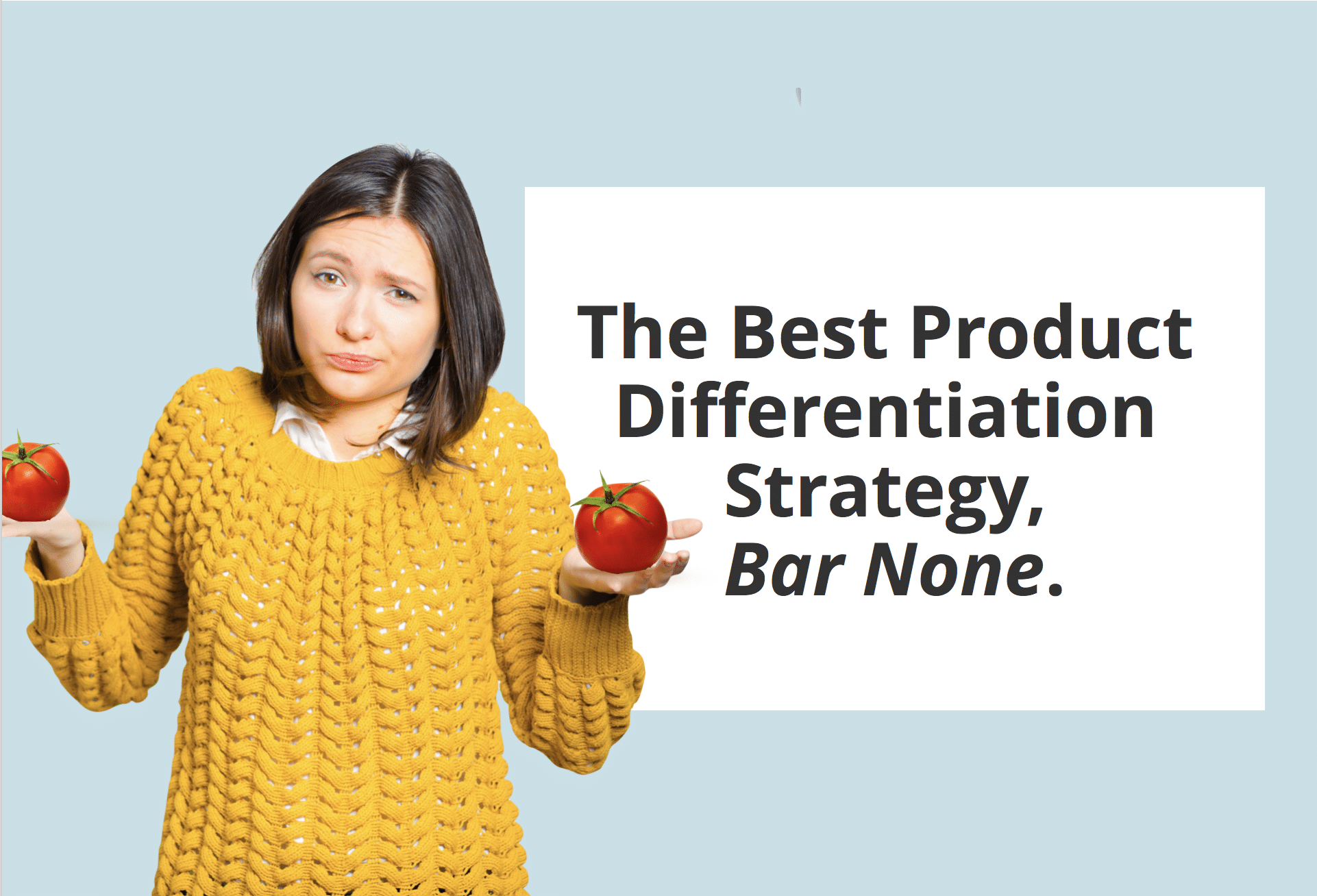The Best Product Differentiation Strategy bar none

Brands know the quality of their products and the values of their brand in advance, but consumers do not. While better quality, transparency, and trust signaling can increase sales and price points, brands must first communicate product differentiation well. According to research, helping brands communicate product differentiation and increase brand trust is what third-party certification does best, bar none.
Why Third-Party Certification Works
Imagine that a consumer goes to the store and picks up two tomatoes. While examining the two tomatoes, they see that both tomatoes look fresh, clean, and equally ripe. To the best of the consumer’s knowledge, the tomatoes are identical. However, one tomato is 20 cents more than the other. Which tomato does the average consumer choose? More often than not, they choose the tomato that is less expensive. Why should they pay more for identical products?
In that respect, high-quality and low-quality products often appear the same to consumers and unfortunately, the market prices of these products are often the same, regardless of quality. It’s also unfortunate that higher-quality products typically cost more to produce.
But if the consumer views the products as equal when there is a distinct difference in quality, the quality producer loses: either their product is chosen less often by the average consumer, or the profit margin is lower.
The market is simply not fair to the higher-quality producer. Therefore, high-quality producers must employ a different strategy to even the playing field. To gain a competitive edge, high-quality products must be differentiated against low-quality products in order to justify the higher price. They must be able to effectively communicate the difference between their products and others in the market. And they must do it in a way that also commands trust.
That’s why third-party certification is a critical strategic asset for high-quality producers, because third-party certification offers both product differentiation and trust that significantly reduces consumer decision friction. This is what makes third-party certification one of the top 5 ways for a brand to increase consumer confidence.
Third-Party Certification Effectuates Product Differentiation Best
Brands differentiate their high-quality products from low-quality products through four signal strategies: reputation, third-party certification, warranty, and information disclosure. However, of these four signaling strategies, studies suggest that third-party certification sends the strongest signal to differentiate products, bar none.
It was found that on average, certified products were sold for more than 50% otherwise equivalent products, and could have up to a 55% price differentiation impact between certified and non-certified products. This same study found that reputation only impacted price differentiation less than 3% and that warranties had no effect on the price of goods, whatsoever [1]. In other words, the study found that the single-most effective signal to differentiate products and increase sales prices was from third-party certification. It further suggests and that although brand reputation and warranties are important, they may not be enough to substantiate higher prices.
These results make total sense. Not only do third-party certifications increase trust more than claims made by the brand itself by reducing conflicts of interest, the logos also communicate certain qualities and product attributes in an easily understandable language to the consumer. This form of communication through third-party certifications improves market efficiency and helps consumers distinguish differences between similar products.
Further, third-party certification effectuates a “separating equilibrium,” in which the high-quality producer becomes certified and increases their trust signaling and their prices, and the lower-quality producer must enact a different strategy. The results from this strategy occur for two reasons: low-quality producers do not meet the certifier’s requirements, and because consumers believe that certified products are more high-quality than non-certified products. In other words, certification allows consumers to tell the difference between similar products, and the certified product is more trusted that its non-certified counterpart. Product differentiation and trust pay off, especially in the current food climate.
Product Differentiation and the Rise of Conscientious Consumers
Another study suggests that consumers who show a distinct preference for social responsibility [2] tend to buy higher-quality, higher-priced products. In contrast, the consumers who pay less attention to social responsibility are more likely to purchase lower-priced, standard products.
These “Conscientious Consumers” are on the rise, and they are the untelevised revolution. Here’s something to chew on: a 2016 Nielsen report [3] indicated that local and regional companies were experiencing higher value growth compared to their multinational corporation counterparts: 13 percent and 23 percent from 2012 to 2014, and 5 percent respectively.
In other words, the small-scale local company now has the upper-hand over the multinational corporations that were once at the top of the business food chain. In this new food landscape, product differentiation won’t just be a strategy; it will “separate the chaff from the wheat” so to speak.
Third Party Certification and Value Equilibrium
For multinational businesses to battle or reverse the trend of dwindling value growth, business leaders should look beyond their yearly returns and refocus their energy towards capturing the hearts and wallets of today’s emerging consumers. They should seek to improve trust signaling in a way that allows them to compete in this rapidly-changing market that is driven by the conscientious consumer that is reshaping the food movement.
With both conscientious consumerism and “food tribalism” on the rise, smart brands of all sizes would do their best to consider the benefits of third-party certifications that are either improving trust signaling and transparency or are aligned with these growing demographics.

References
1. M. Dewally and L. Ederington, “A comparison of reputation, certification, warranties, and disclosure as remedies for information asymmetries: lessons from the comic book market,” 2002.
2. K. Conrad, “Price competition and product differentiation when consumers care for the environment,” Environmental and Resource Economics, vol. 31, no. 1, pp. 1–19, 2005.
3. Go Local to Win the Hears and Carts of Southeast Asian Consumers. (2016) Nielsen Go Local Report. 6-10. Retrieved from
